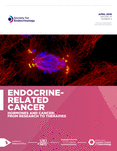The state-of-play and future of platinum drugs
- Correspondence should be addressed to N J Wheate; Email: nial.wheate{at}sydney.edu.au
Abstract
The year 2015 marks the 50th anniversary since the discovery of the anticancer potential of cisplatin and it remains just as useful now as it did back then, especially for the treatment of some endocrine-related cancers like ovarian and testicular carcinomas. Since its discovery, five other platin drugs have received approval in various countries. While several new platin drugs are in preclinical development, in the last decade only two new platin drugs have entered clinical trials, LA-12 and dicycloplatin, reflecting a shift in research focus from new drug design to improved formulations of already approved platin drugs. These formulations include their encapsulation with macrocycles to slow and prevent their degradation by proteins and peptides; their attachment to nanoparticles to passively target solid tumours through the enhanced permeability and retention effect and their coordination to important nutrients, proteins, antibodies and aptamers for active tumour targeting. These formulation methods have all shown potential but none have yet yielded a new marketable medicine containing a platin drug. The reasons for this are problems of consistent drug loading, controlling the location and timing of drug release and the inherent toxicity of some of the drug delivery vehicles. In addition to drug delivery, functional genomics is now playing an increasing role in predicting patients' responses to platin chemotherapy and their likelihood of experiencing severe side effects.
- Revision received 16 June 2015
- Accepted 23 June 2015
- Made available online as an Accepted Preprint 25 June 2015
- © 2015 Society for Endocrinology












